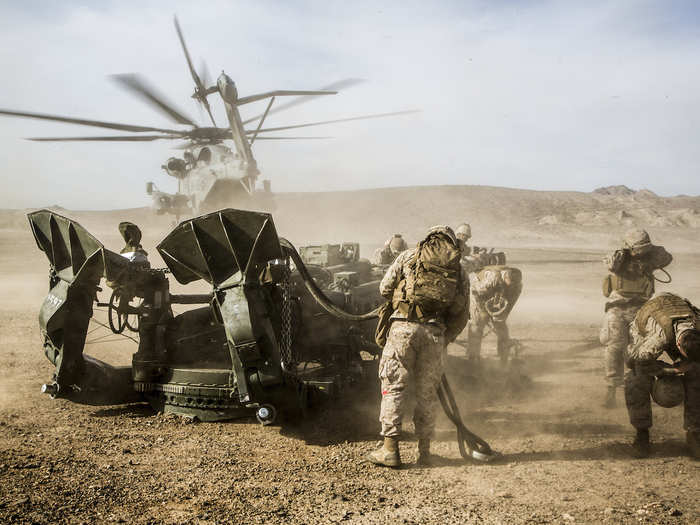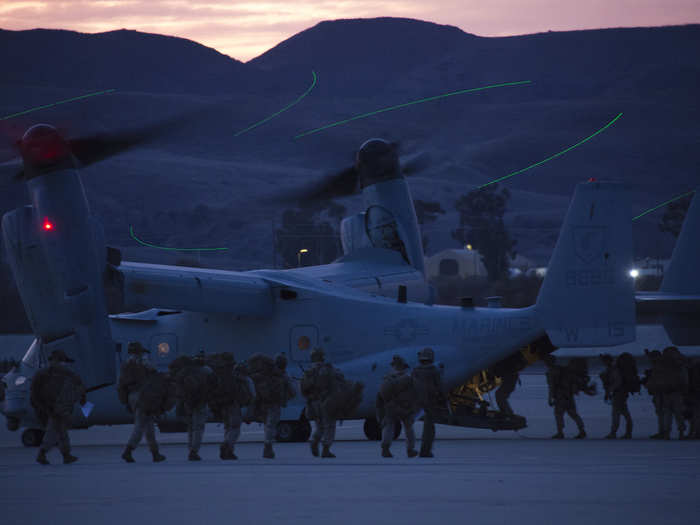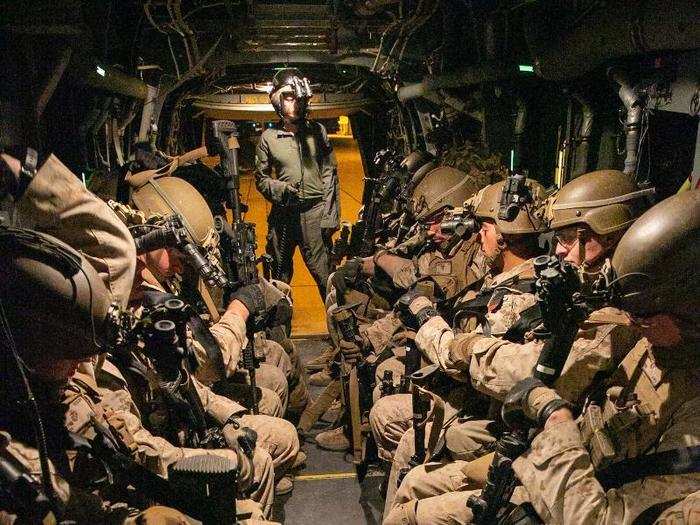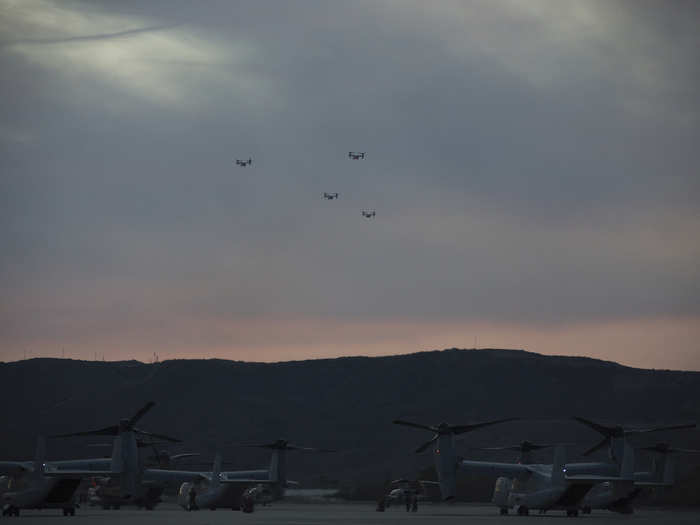The regimental air assault used a variety of 3rd MAW Marines and machines and integrated each of their capabilities into an adaptable aviation maneuver, all working in support of the ground combat element.
"I think more than anything else, it provides versatility and flexibility," said Bartolomea. "The air assault portion provides the ground element the ability to maneuver in three dimensions and bypass enemy strong points to get at enemy weak points. The flexibility and the range of fire power that 3rd MAW and MAG 39 brings in support of 1st Marine Division is critical to make sure they can achieve their objectives."
The regimental air assault is one of the many exercises 3rd MAW performs in order to provide realistic and relevant training in support of ground operations.
"Training like this is vital to individual and unit readiness," said Capt. Valerie Smith, a pilot with Marine Heavy Helicopter Squadron (HMH) 465, MAG-16. "Integrating aviation in the same manner that it would be used in a MAGTF gives the Marines the training they need to remain aggressive, prepared and focused on operational excellence."
"At the end of the day," said Bartolomea, "this combined effort puts our enemies in a dilemma that gets our ground combat element to the objective they need, giving us a lethal edge on the battle field."
The Super Stallions and Ospreys lifted off from the rain-soaked field, their precise and graceful movements a visible testament to the rigorous training required of aircrews.
The Marines, loaded in the fuselage, looked back on the landing zone as gusts from the rotors blew away all traces of them ever being there save for the muddied footprints they left behind as a reminder of their presence and the lethal capabilities of the force that moved them.
Air assaults of this magnitude are and will continue to be a vital part of the 3rd MAW's preparation as they train and focus on naval integration and ship-to-shore transport, connecting the naval force and its warriors. The regimental air assault is but one example of how 3rd MAW supports the Navy-Marine Corps warfighting team.




